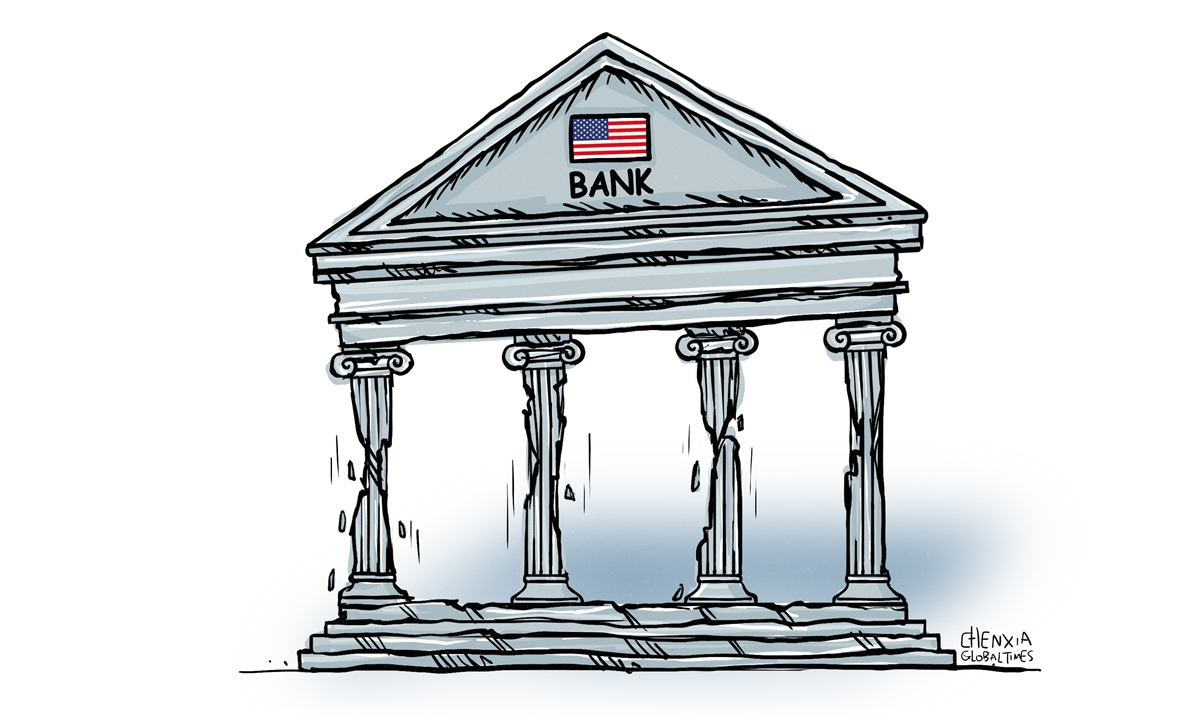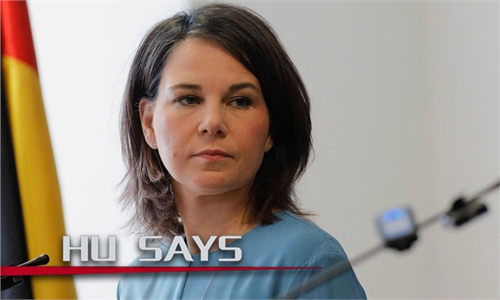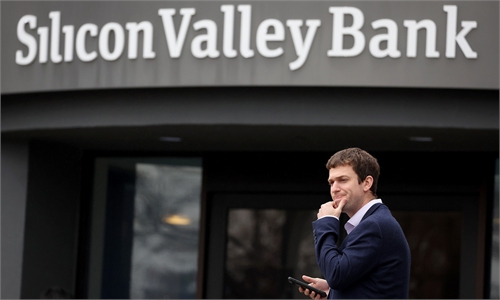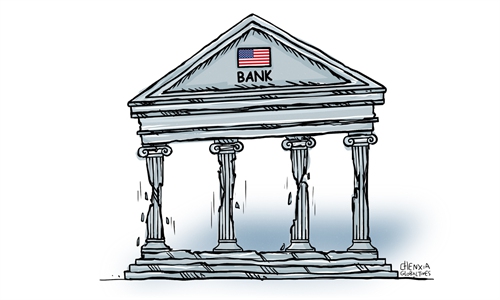
Illustration: Chen Xia/Global Times
The crisis surrounding the US banking system is in the spotlight again as it is upsetting for the public to find that months after the most recent US bank failure, the pressure on commercial banks has actually intensified, instead of easing.The Federal Reserve said in a survey of lending officers on Monday that the proportion of US banks tightening terms on commercial and industrial loans for medium-sized and large businesses rose to 50.8 percent in the second quarter, from 46 percent in the previous quarter, Bloomberg reported.
The tightening credit by US banks, to a certain extent, indicates the growing pressure facing the banking system, which makes small and medium-sized US banks even more vulnerable to risks. For instance, Heartland Tri-State Bank of Elkhart, Kansas, a lender in the state of Kansas, was closed by local regulators on Friday.
While Heartland only had four branches and was the smallest of the five US banks that have collapsed this year, its failure seems to be telling people that the crisis of the US banking system is not over. It is hard to tell how the latest development will rattle the frayed nerves of investors and depositors, and whether it will bring a new round of financial turmoil to the US banking sector.
The reason for such concern is mainly because the crisis surrounding small and medium-sized US banks reflects something in common. These banks failed not just because of poor risk management, but more fundamentally because of the successive interest rate hikes by the Fed.
The US central bank raised interest rates last week for the 11th time since March 2022, bringing the target on its benchmark rate to a range of 5.25 percent to 5.5 percent, the highest level in 22 years. High interest rates have led to high deposit-side costs and a liquidity crunch for banks.
Although the Fed introduced the Bank Term Funding Program, an emergency lending program created to provide emergency liquidity to US depository institutions, after the collapse of Silicon Valley Bank (SVB), it is only a temporary fix that cannot fundamentally improve the plight facing the US banking system.
The liquidity pressure on those banks is on the rise, not declining. Deposits at the largest banks in the US dropped $78 billion during the week ended on July 12, marking the biggest drop since the week ended on March 22, when the regional banking crisis was still in full force.
The US banking crisis has not abated as the Fed claims, and a large number of regional commercial banks are still dependent on the Fed for emergency lending. It is conceivable that with interest rates unlikely to fall in the short term, small and medium-sized banks will face even more difficult situations and the possibility of more bankruptcies cannot be ruled out.
In view of the risks and problems that are still brewing, investors and depositors, particularly those from China, are advised to consider carefully when it comes to their deposits and investment arrangements with US banks.
What happened to the SVB's Chinese customers may serve as a good lesson. According to a June report by The Wall Street Journal, the Federal Deposit Insurance Corp (FDIC) seized the deposits of SVB's customers in Asia, who still need to pay back loans outstanding to First Citizens Bank. The FDIC won't protect the deposits in SVB's branch in the Cayman Islands, which had deposits from clients in China, Singapore and other parts of Asia.
Whether those customers get their deposits back or not, it's a wake-up call for Chinese companies that have deposits with US banks. With the mounting pressure on the US banking system, Chinese companies need to be alert to risks and take precautions against the worst.



